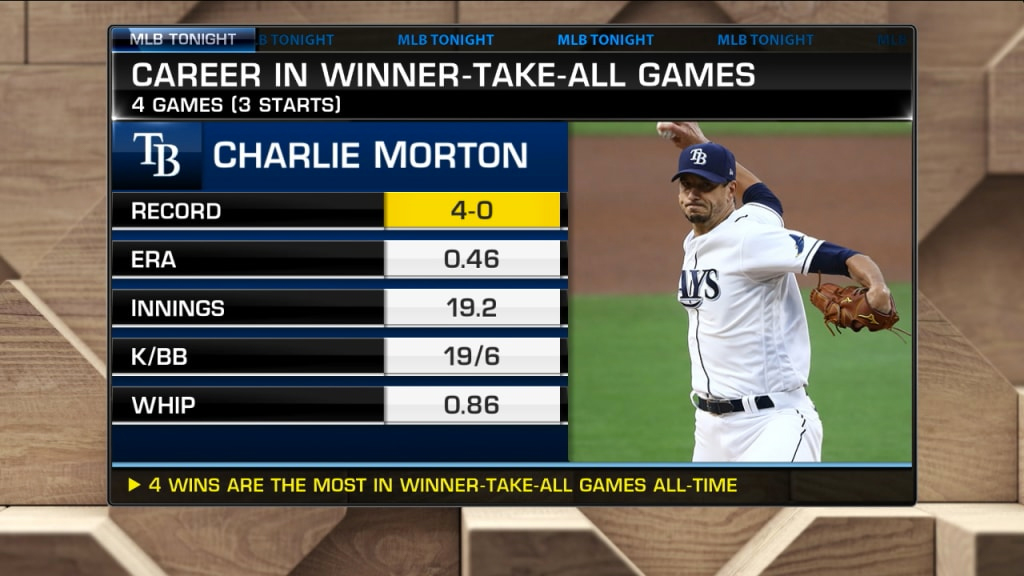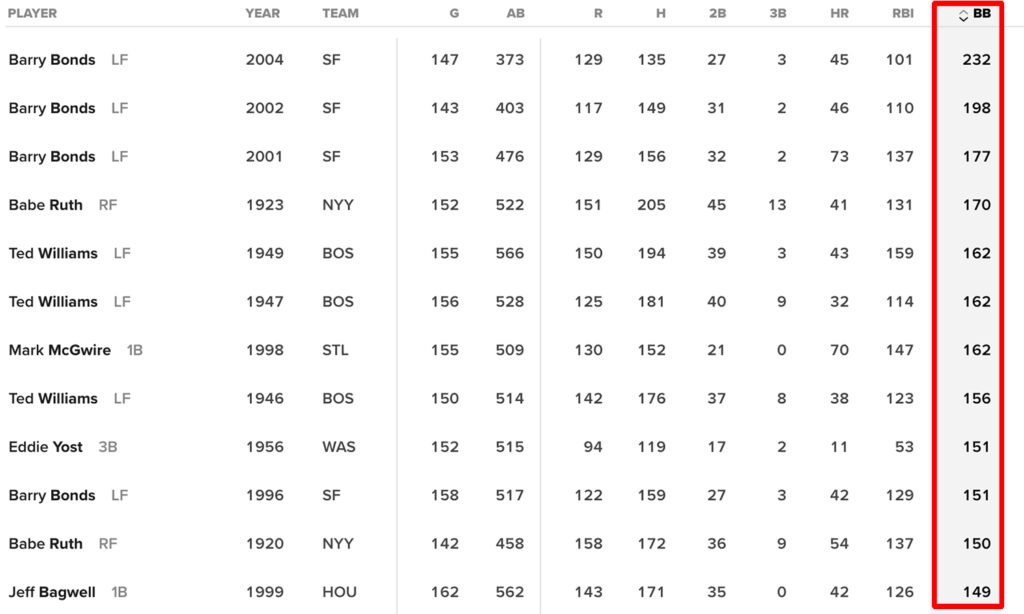A “Bb” in baseball stands for “Base on Balls.” This term is also known as a “walk.”
A base on balls happens when a batter receives four pitches outside the strike zone. The batter can then walk to first base. In baseball, this event can change the game’s dynamics. It gives the batting team a chance to score.
Walks can frustrate pitchers and excite fans. They are a key part of the game’s strategy. Understanding a “Bb” helps you appreciate the game’s finer details. If you’re new to baseball, learning this term is essential. So, let’s dive deeper into what a “Bb” means and its impact on the game.
Mechanics Of A Walk
Understanding the mechanics of a walk in baseball is crucial. A walk, also known as a base on balls (BB), occurs when a pitcher throws four balls outside the strike zone. The batter then advances to first base without hitting the ball. This simple concept involves several key elements.
Umpire’s Role
The umpire plays a critical role in a walk. They stand behind the catcher and call balls and strikes. Each pitch is observed closely. If the pitch is outside the strike zone and the batter does not swing, the umpire calls it a ball. After four balls, the batter is awarded first base. This decision-making process ensures fairness and accuracy in the game.
Pitcher’s Responsibility
The pitcher has the responsibility to avoid walks. They aim to throw pitches within the strike zone. This area is above the batter’s knees and below their chest, over home plate. Accurate pitching prevents walks and keeps the game moving. A pitcher who walks many batters can put their team at a disadvantage. Effective pitching requires skill, focus, and consistency.

Credit: www.gaimday.com
Rules Governing Walks
In baseball, a Bb (base on balls) is often referred to as a walk. It occurs when a batter receives four pitches outside the strike zone. As a result, the batter is awarded first base. Understanding the rules governing walks is crucial for both players and fans. Let’s explore the essential aspects of these rules.
Four-ball Rule
The Four-Ball Rule is fundamental to the concept of a walk. When a pitcher throws four pitches outside the strike zone, the batter earns a walk. These pitches must not be swung at by the batter. The umpire calls each pitch, and if four are balls, the batter gets to walk to first base. This rule helps balance the game between pitchers and batters.
Intentional Walks
An intentional walk is a strategic move by the defensive team. The pitcher deliberately throws four balls to the batter. This decision is made to avoid pitching to a strong hitter. The catcher usually stands up and signals for the intentional walk. The pitcher then throws the balls far from the strike zone. The batter is awarded first base without the need to swing at any pitch.
Impact On The Game
In baseball, a Bb, or base on balls, can have a significant impact on the game. This simple act of a batter walking to first base influences both offensive and defensive strategies. Understanding how a Bb can affect the game is key for players and fans alike.
Offensive Strategy
A base on balls provides an immediate advantage to the batting team. It puts a runner on base without the need for a hit. This can disrupt the pitcher’s rhythm and increase the pressure on the defense. The team at bat can now focus on advancing the runner through strategic plays like bunts or hit-and-runs. A Bb can also extend an inning, giving the team more chances to score. This small action can lead to big changes in the game’s momentum.
Defensive Strategy
From a defensive standpoint, a Bb can force adjustments. Pitchers need to be more precise to avoid giving up additional walks. Catchers and infielders may need to prepare for potential steals or bunts. The defense must stay alert and ready to react quickly. A base on balls can also lead to a higher pitch count. This might result in the need to substitute the pitcher sooner than planned. Overall, managing a Bb is crucial for maintaining control of the game.
Notable Players Known For Drawing Walks
In baseball, a walk or base on balls (Bb) is a valuable skill. Some players excel at drawing walks, impacting the game significantly. Let’s explore notable players known for their ability to draw walks.
Historical Figures
Many historical figures in baseball are famous for drawing walks. Babe Ruth is one such player. He was not just a home run king but also drew many walks. Another legend, Ted Williams, had an extraordinary ability to get on base. His keen eye for pitches made him a walk master. Barry Bonds also comes to mind. Despite his power-hitting reputation, he drew numerous walks throughout his career.
Modern-day Players
Modern players also shine in drawing walks. Joey Votto stands out. His disciplined approach at the plate helps him earn many walks. Bryce Harper is another modern player known for his ability to draw walks. His keen sense of the strike zone makes him a tough out for pitchers. Mike Trout also excels in this area. He combines power with patience, drawing many walks each season.
Statistical Analysis
Statistical analysis in baseball helps players and fans understand the game better. One key statistic is the Base on Balls (Bb), also known as a walk. This happens when a batter receives four pitches outside the strike zone and gets to walk to first base. Analyzing walks can tell us a lot about a player’s performance and discipline at the plate.
Walk Rate
Walk rate measures how often a player gets a walk. It is calculated by dividing the number of walks by the number of plate appearances. A high walk rate indicates good plate discipline and patience. Players with a high walk rate tend to get on base more frequently. This contributes to their team’s scoring opportunities.
On-base Percentage
On-Base Percentage (OBP) shows how often a player reaches base. It includes hits, walks, and hit-by-pitches. OBP is calculated by dividing the sum of hits, walks, and hit-by-pitches by the total number of plate appearances. A high OBP means the player is valuable to the team. Walks play a significant role in boosting OBP. This makes walks an important statistic in baseball analytics.
Walks In Different Game Situations
In baseball, a walk, or a “Bb,” can change the course of a game. Walks can be crucial in different game situations, influencing the outcome in various ways. Let’s explore two key scenarios where walks become especially important.
Bases Loaded Scenarios
A bases-loaded walk can be a game-changer. The batter gets to first base, and the runner on third scores. This can shift the momentum. Pitchers feel the pressure. One wrong pitch can lead to a run. The defense must be on high alert. Coaches often strategize carefully in these situations.
Late-inning Walks
Late-inning walks are critical. They can set up scoring opportunities. A walk in the ninth inning can lead to a game-winning run. Pitchers must maintain focus. Batters look for any chance to get on base. Fans feel the tension. Every pitch counts. The outcome of the game often hinges on these moments.
Training And Practice
Training and practice are essential for baseball players to understand and master the concept of a Bb, or Base on Balls. It requires both hitters and pitchers to develop their skills through specific drills and exercises. Here, we will explore ways to improve patience at the plate and pitcher drills to avoid walks.
Improving Patience At The Plate
Hitters need to develop patience to recognize pitches and avoid swinging at bad ones. Here are some drills and tips:
- Soft Toss Drill: A coach tosses balls softly while the hitter practices identifying and swinging only at strikes.
- Tracking Drill: Stand in the batter’s box without swinging. Focus on following the pitch to learn its path.
- On-Base Percentage Goals: Set targets for reaching base through walks. Reward players who achieve their goals.
These drills help hitters become more selective and patient, leading to more walks and better on-base percentages.
Pitcher Drills To Avoid Walks
Pitchers must control their pitches to avoid giving up walks. Here are some effective drills:
| Drill | Description |
|---|---|
| Target Practice | Set up targets in the strike zone. Aim for hitting these targets consistently. |
| Simulated Games | Pitch in simulated game scenarios. Focus on throwing strikes under pressure. |
| Control Drills | Use a smaller strike zone during practice to improve pitch accuracy. |
These pitcher drills will help in reducing walks and improving overall control on the mound. Consistent practice ensures pitchers can throw strikes and maintain their command.

Credit: www.usatoday.com
Fan And Media Perspectives
Baseball fans and the media often have strong opinions about walks, or “BB” (base on balls). Some see it as a strategic move, while others think it’s boring. Let’s dive into the different perspectives on this important part of the game.
Common Misconceptions
Many fans believe a walk is not exciting. They think it slows down the game. But walks can change the course of a game. A walk can load the bases or bring in a run. Some people also think a walk means the pitcher failed. But it can be a sign of the batter’s skill and patience.
Famous Walks In History
There have been many famous walks in baseball history. One of the most famous is Barry Bonds’ intentional walks. Teams often walked him to avoid his powerful hits. Another memorable walk was in the 2004 ALCS. Boston’s Kevin Millar walked and sparked a historic comeback. These moments show how a simple walk can make a huge impact.
Frequently Asked Questions
What Does Bb Mean In Baseball?
BB stands for “Base on Balls” or a walk. It occurs when a batter receives four balls from the pitcher, allowing them to advance to first base.
How Is A Bb Recorded In Baseball?
A BB is recorded when a batter gets four balls. This allows the batter to walk to first base without hitting the ball.
What Is The Impact Of A Bb In A Game?
A BB puts a runner on base. It can lead to scoring opportunities and affects the pitcher’s statistics.
How Does A Bb Affect A Pitcher’s Stats?
A BB increases the pitcher’s walk rate. It negatively impacts their control and overall performance metrics.
Conclusion
Understanding a “Bb” in baseball is key for fans and players alike. It stands for “Base on Balls,” or simply, a walk. This happens when a pitcher throws four balls outside the strike zone. The batter gets to walk to first base.
Walks can change the game’s momentum. They allow batters to reach base without hitting the ball. Knowing this term enhances your baseball knowledge. So next time you watch a game, you’ll recognize a “Bb” with ease. Enjoy the game and share this insight with others!





